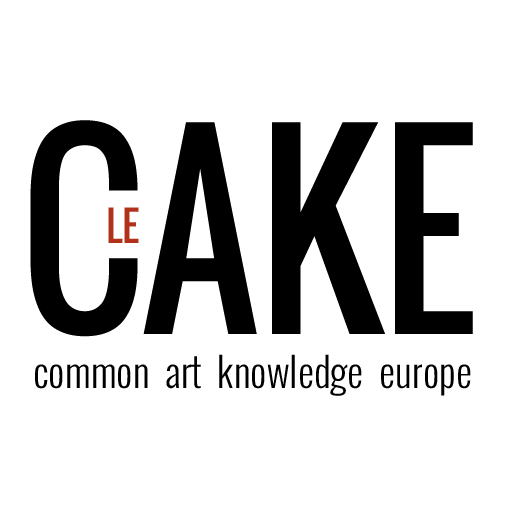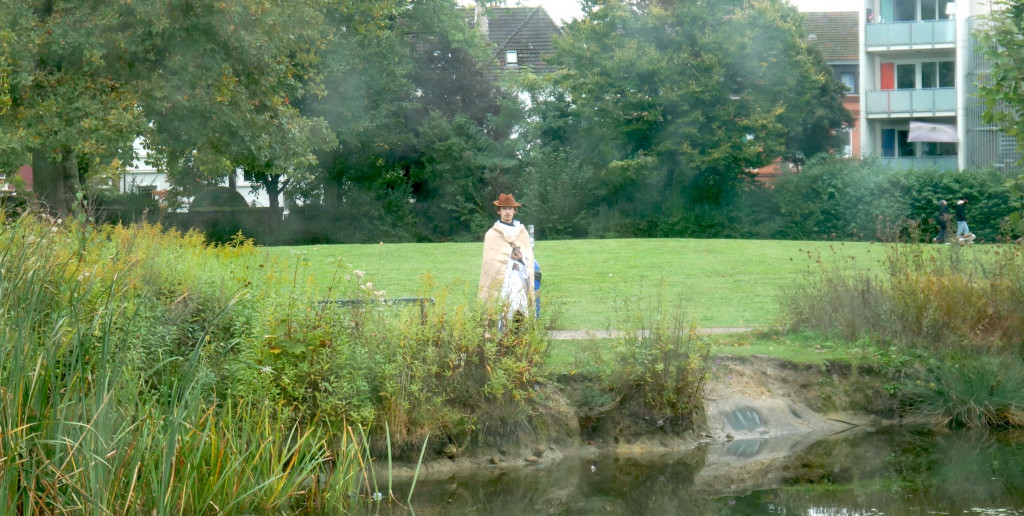The script / description of the installation
What exactly is your artistic performance / installation about?
“Last Drop” station 1 is a performance based on two original spoken word poems that deal with the reduction of available water and the problems that will arise in the future.: WATER IS A LUXURY and LAST DROP. It talks about dams, rivers, oceans and pollution, overcrowded seas, plastic, destruction of ecosystems, drought, food, climate changes, countries, geopolitical agreements and new possible disagreements, wars, migrations.
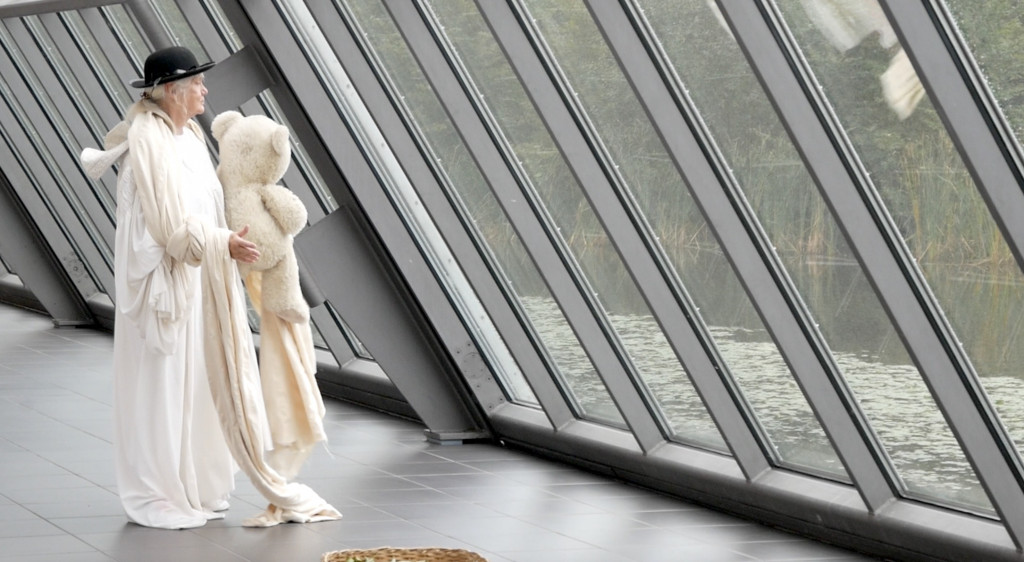
In Gelsenkirchen has been adapted to a short performance, at Wissenschaftspark building, in its lake and in the park, developed in collaboration with the project’s participants and LeCake’s ambassadors in the city.
“Last Drop” station 2 looks at the importance of water in Europe, but especially in the Iberian Peninsula and Southern Portugal. “We´ve asked a couple to keep the number of water jugs for one year. Then we filled them with water and natural colourants and spread these jugs through the landscape and made pictures.
We built a tree and hung up the photos, the ones you see here, as if they were fruit.”
Based in “Água Lda” (limited water) – an exhibition with a short storytelling, about lack of water, directed to kids, created some years ago – and a choreographical workshop WATER in Hamm, and then in Évora, – this second station, recovered materials (photographs, videos, sounds), adapted and updated them, deepening the theme, following a research on water, concerning with drought, sea and countries needs.
With all these, a black room installation was created, focusing on problems like: lack of drinkable water, all forms of pollution, the impact in the ecosystem and the social and political effects, among other issues, of it. These are questions/ matters that have been developed and adapted along the way, taking into account ecological concerns, social and political impacts.
The water situation is quite complex and affects different layers and circles of influence, contaminating (even in this double sense) different fields and areas.

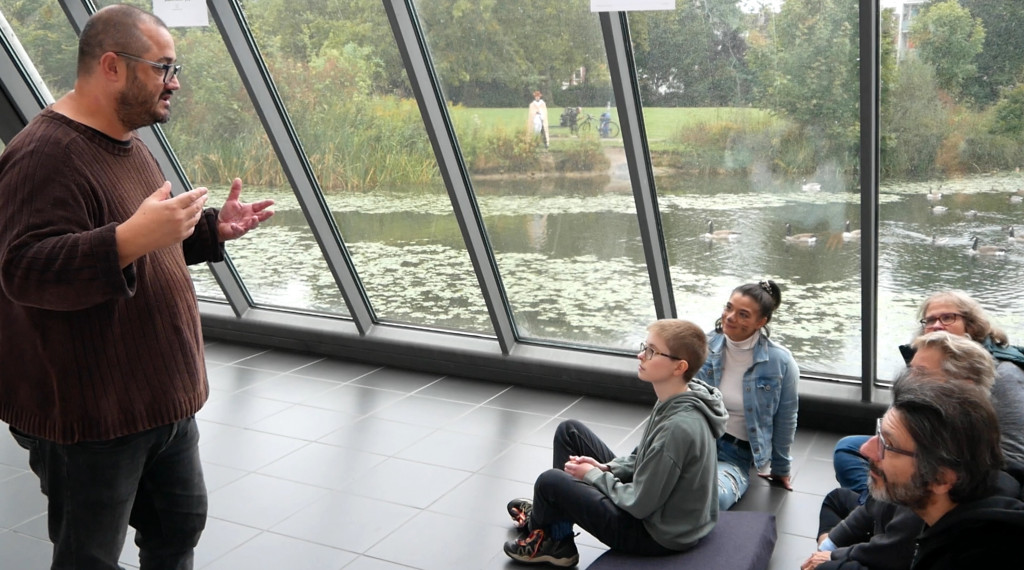
POEMS “WATER IS A LUXURY” & “LAST DROP” available in portuguese, english, german.
What happened during the performance/installation?
The audience was invited to experience a moment, somehow kind of ghastly (or that was the idea), that warned of pollution, lack and dispute over water problems.
At station 1, spectators could sit on cushions on the floor, watching the site-specific performance (with the actors Kis Olivér and Marion Schumacher, with pedagogical and artistic direction by Hugo Miguel Coelho, from ExQuorum) merging the exterior (outside) and interior (inside).
The performance was based on the poems and the actors’ movements to adapt to the space (it is therefore proposed that when this performance is re-staged, it will be adapted to the specific space in which it takes place).
At station 2, the participants entered an intimate space where, after a short presentation of the project and the poem (in this case by Sara Ai-Ai, from ExQuorum), they watched a video about the problem of water, as well as images of a choreography featuring water and the use of glasses – carried by two dozen performers dressed in white – complemented by music and the pre-recorded voices of the participants of the residency in Gelsenkirchen and of passers-by on the street, in a vox-pop style, answering questions: what impact does water have on you? Do you think you’ll have water forever? And when there’s no water, what else?
The intention with this presentation is to broaden and connect the various proposals, between alerting, disturbing, worrying and moving.
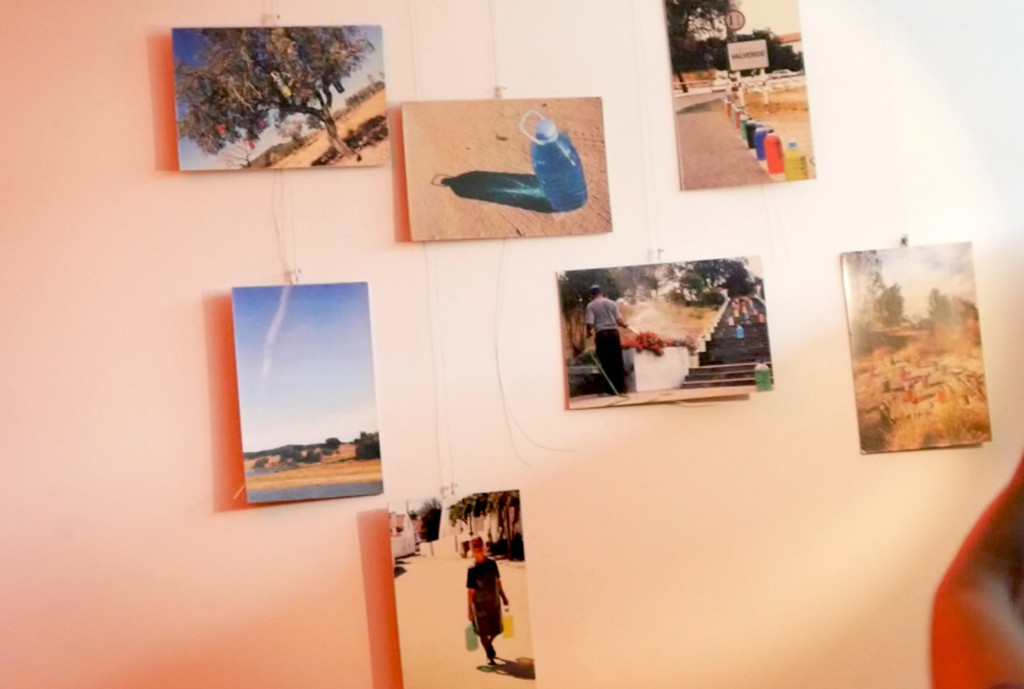
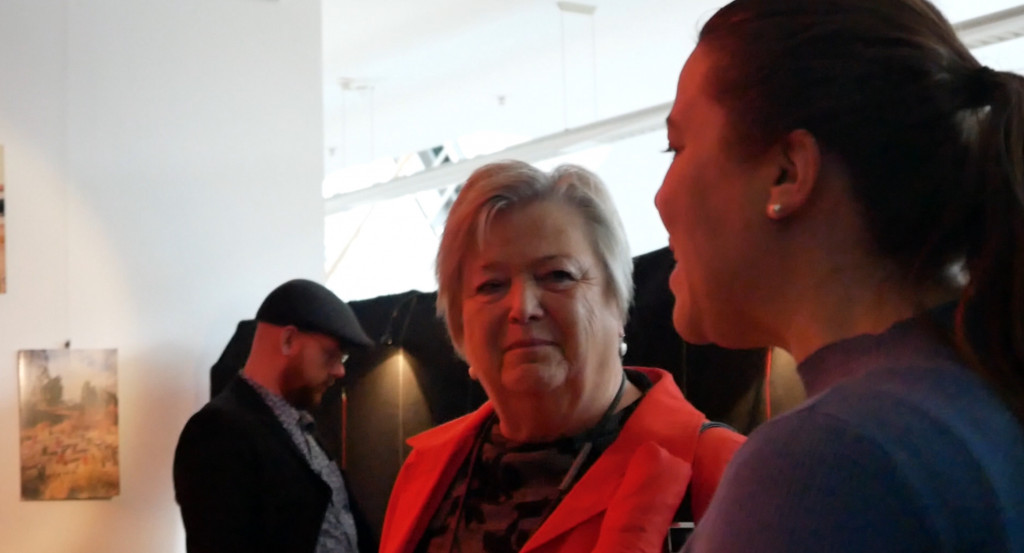
What did the audience see when assisting with the piece?
The aim was, in the first stage, to reduce the materials used as much as possible (existing proposals and reduction of technical materials) and in the second stage (to use materials and recover old materials), avoiding as much as possible the use of new materials and especially single-use materials.
The participants were able to enjoy (in the first station) the venue, with its large glass walls and large windows that promoted views of the park outside, promoting the relationship between inside and outside, nature and humanity. In the second, they were guided through a journey of concern related to water, with an explanatory framework, visualisation of multimedia materials and a sensory and interactive experience with the materials, namely the photographs. This setup allowed the audience to enter a space and time, completely focused on reflecting on the theme of water.
If the first station offered a shocking theme, in order to provoke reactions, in a large space, connecting interior and exterior, the second station was intended to create an introspective and immersive space, allowing for reflection and sensitization.
Expanded Methodology: How Ideas Became a Performance and an Installation
- Artistic Concept Development: The aim was to recover materials (recycling, reuse, circular) on the theme of water. At the same time, the poems were written by Hugo Miguel Coelho, taking into account input from participants and experts addressing environmental challenges.
- Research and Community Engagement: The result took into account the interaction with participants in the various workshops held in Evora, as well as previous legacies and tangents from other courses (indicated above) and the contribution of experts, whose videos are available on the project’s channels.
- Narrative Creation: The information was analyzed and the materials studied, proposing a creative approach, in order to look at the problematic, through the artistic experience in order to guarantee reflection but also possible action, or at least awareness of those who watch and participate in the process.
- Production: For the first station, there was intense exploration and rehearsal work, in which the actors were an active part of the creation, while for the second station, the aim was to choose a place in the building that would allow for the promotion of an intimistic and isolated space. The entire journey took into account ecological awareness and the footprint of materials, minimalism, whether in the creation, development, assembly and use of technical and purposeful materials.
- Facilitation: At both stations there was a guide to help you get to know the audience and to promote a space for chatting and asking questions.
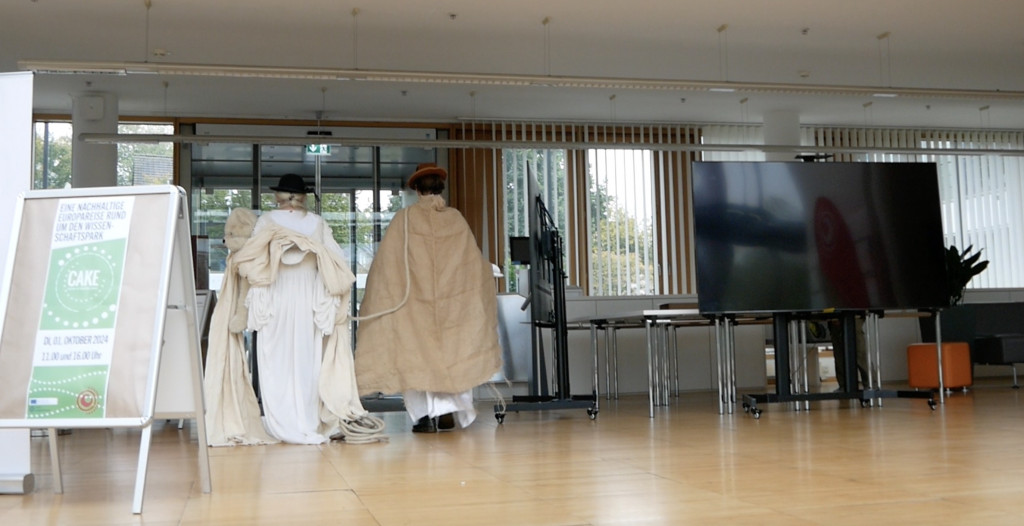
Set-Up
The material we used
The installation and performance prioritized sustainability by reusing some materials and taking others from the environment and returning them back.
Fabrics, props and utensils from Consol Theatre were reused to dress the actors, create the spaces and to use in the performance, such as:
- Black fabric to create a black room;
- Tea Cups and pot, plates, icecream plastic cup, plush bear, basket, small golden nest, rope, plastic case for the actors to use in the performance;
- White priest robe, scarf, long blanket, brown fabric sac, white robe, black hat, brown german hat, t-shirts, as props.
Also, the same pictures, frames and posters were displayed from another previous installation.
From the environment it was used some leaves that were in the ground to fill up the basket with, and water from the lake, aligned with the ecological message of the performance.
Electronic equipment included a video projector, sound speaker, computer, microphone, voice recorder, sound mixer, spotlights, all borrowed from Consol Theater. For all of them the use was shared, further emphasizing ecology.
The space
The production was held in a unique cultural venue in Gelsenkirchen, featuring a large, glass-walled central area. This space allowed natural light to flow in and offered a direct view of the surrounding autumn landscape. The glass walls served as a metaphorical extension of the story’s themes, symbolizing transparency, interconnectedness, and harmony with nature.
The clean and minimalist design of the venue provided a perfect backdrop for the performance, ensuring the audience could focus on the narrative and the auditory experience.
In “Last Drop”, use was made of the park (with a view from inside), the central space of the building and a nook, adapted to create an intimate space.
The way we presented the play
Station 1 was presented as a performance in which the spectators were watching, feeling the impact of the movement and dynamics of the building itself (businesses, cafeteria, other presentations), as well as the different groups of spectators circulating between presentations by the various partners.
Station 2 was designed to create an enclosed, isolated and intimate installation space, in order to promote immersion and absorption of the materials on display.
